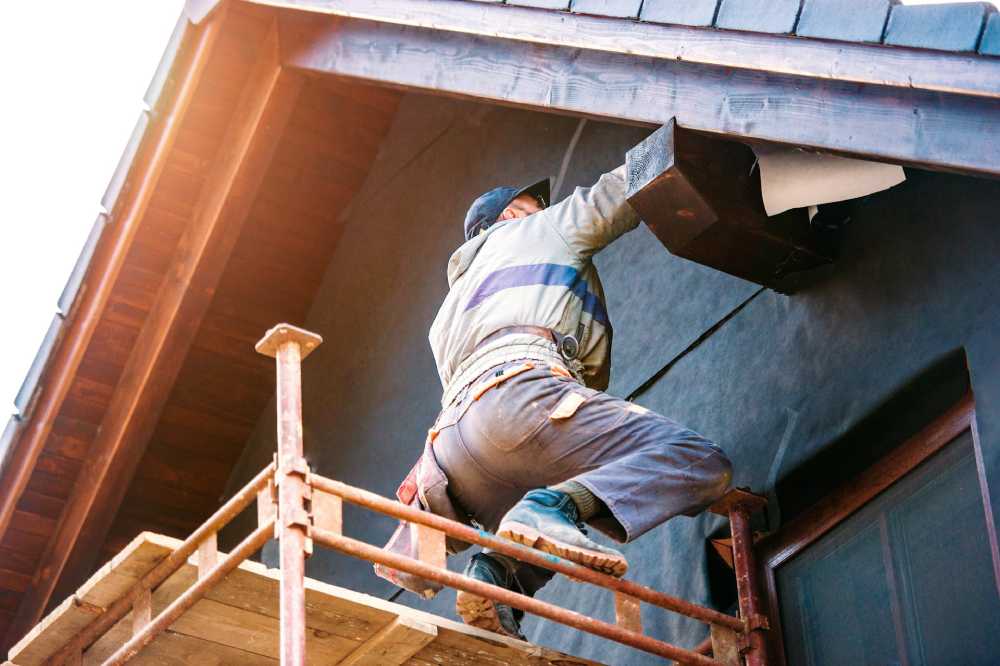How Weather Can Wreck Your Roof and What to Do About It
When was the last time you looked up at your roof and really thought about what it’s been through?
Most people only notice their roof when there’s a leak or something visibly wrong. But the real damage often starts quietly, caused by the weather. Sun, rain, wind, hail, and snow all have very different effects, but each can cause serious problems over time. If you’ve ever wondered why some roofs seem to fall apart quicker than others, the answer often comes down to how well they’ve been protected from the elements.
Let’s break down how different types of weather wear your roof out, and what you can do to stay ahead of it.
Contents
Sun: The Slow Burner
You might not think sunshine is harmful, but it’s one of the most consistent threats to your roof. Prolonged exposure to UV rays can break down roofing materials, even those designed to be durable.
As the sun beats down day after day, shingles can dry out and crack. Over time, the protective oils in roofing materials evaporate. This leaves the surface brittle and more likely to fail. You might notice shingles curling, fading, or even crumbling at the edges.
Roofs in warmer climates or those that get full sun exposure for most of the day tend to age faster, especially if the materials weren’t chosen with heat resistance in mind. While this type of damage may not cause immediate leaks, it reduces the roof’s lifespan and makes it vulnerable to other problems.
Rain: The Silent Soaker
Unlike a dramatic storm, steady rain wears down a roof in a more subtle way. Water is relentless. Once it finds a weak spot, it exploits it.
Common issues caused by rain include:
- Slow leaks that form around flashing or chimneys
- Water seeping under shingles that have lifted or warped
- Rotting wood in the underlying structure
- Growth of moss or algae, especially in shaded areas
If your roof isn’t properly ventilated or if water doesn’t drain correctly, moisture gets trapped. That can lead to mold and mildew, not just on the roof but in your attic as well. A minor leak can turn into major water damage if left unnoticed.
Regular inspections, especially after long rainy seasons, are key. A roofing company with experience in moisture damage can spot issues early before they spread into more expensive repairs. They can also advise on preventive steps tailored to your roof’s age, material, and exposure to the elements.
Wind: The Great Uprooter
High winds do more than just blow off a few leaves. They can lift shingles right off your roof, exposing the layers underneath. In some cases, wind doesn’t tear off materials entirely, but loosens them just enough to let water sneak in.
Corners, edges, and ridges are especially vulnerable. Wind can creep under the edge of a shingle, pry it up slightly, then do more damage over time. Once the outer layer is disturbed, it’s easier for the next storm to make things worse.
Flying debris is another concern. Branches or other objects tossed around by wind can puncture the roof or crack tiles, especially during severe weather seasons.
The best defense? Secure all materials well, keep nearby trees trimmed, and check for damage right after storms pass through.
Hail: The Quick Destroyer
Hailstorms can do in minutes what sun and rain take years to accomplish. Hailstones, even the small ones, hit hard. They can bruise, crack, or break roofing materials on impact.
Some signs of hail damage include:
- Dents or round marks on shingles
- Shattered or broken tiles
- Granules worn away from the surface
- Exposed underlayment
It’s not just cosmetic damage, either. Once the surface layer is compromised, water can begin to enter the roof structure. Depending on your roofing material, even one serious hailstorm might be enough to justify a full replacement.
Because hail damage isn’t always visible from the ground, it’s important to have an expert take a closer look if you suspect your roof has been hit. Catching the damage early can save you from more expensive repairs down the road.
Snow and Ice: The Hidden Weight
Snow may seem soft and harmless when it falls, but when it piles up on your roof, it gets heavy fast. Add ice into the mix, and now you’ve got weight and moisture working against your structure.
One of the most damaging effects of winter weather is the ice dam. This happens when heat escapes from your attic, melting snow on the roof. The water runs down to the edge and refreezes, forming a dam that prevents proper drainage. Water then backs up under the shingles and into the roof layers.
You might not notice the damage right away, but over time it can lead to:
- Water-stained ceilings or walls
- Sagging roof decks
- Mold in insulation or framing
- Weakened structural supports
Good insulation and ventilation go a long way in preventing ice dams. Also, removing heavy snow buildup in a safe and controlled way can reduce the risk of a collapse.
What You Can Do to Protect Your Roof
Weather damage is often unavoidable, but you can minimize the risks with a few proactive steps. Prevention is always cheaper and easier than repair.
1. Schedule Regular Inspections
Once or twice a year, especially after a major season change, have someone assess your roof. They’ll catch small problems before they turn into big ones.
2. Clean Your Gutters
Blocked gutters cause water to pool where it shouldn’t. Keeping them clear ensures rain and melting snow drain properly, reducing water-related damage.
3. Trim Trees Nearby
Overhanging branches don’t just pose a risk in windstorms. They also drop leaves, which clog drainage paths and encourage moisture buildup.
4. Replace Damaged Shingles Early
A single cracked or missing shingle can be the start of a bigger problem. Replacing it quickly keeps your roof sealed and strong.
5. Watch for Interior Signs
Stains on ceilings, moldy smells, or increased humidity in your attic could point to roof issues, even if the exterior looks fine.
Don’t Wait for the Leak
Your roof handles more than just weather. It protects your home, your belongings, and everything under it. The signs of damage aren’t always obvious until it’s too late, especially when different types of weather hit throughout the year.
Getting ahead of the problem is the smartest approach. Stay informed, stay alert, and make regular maintenance a habit. Taking weather seriously is one of the best ways to keep your roof in shape for the long haul.

